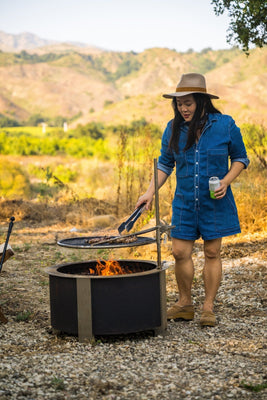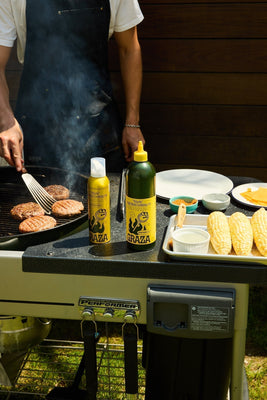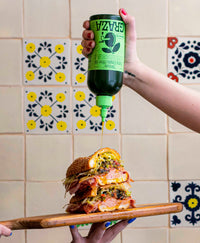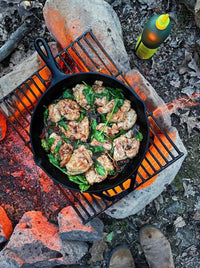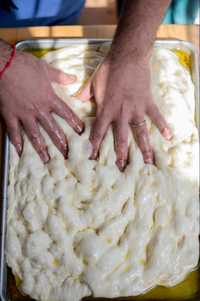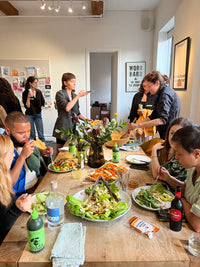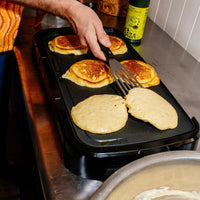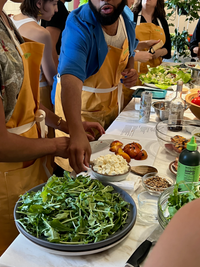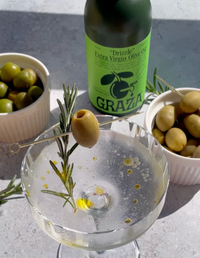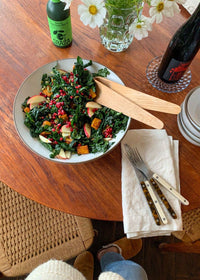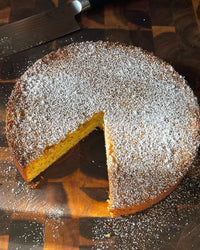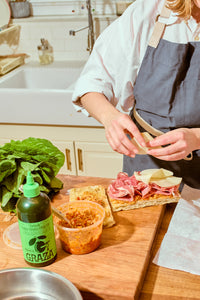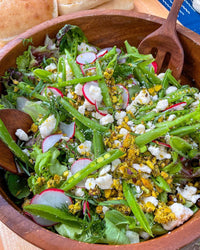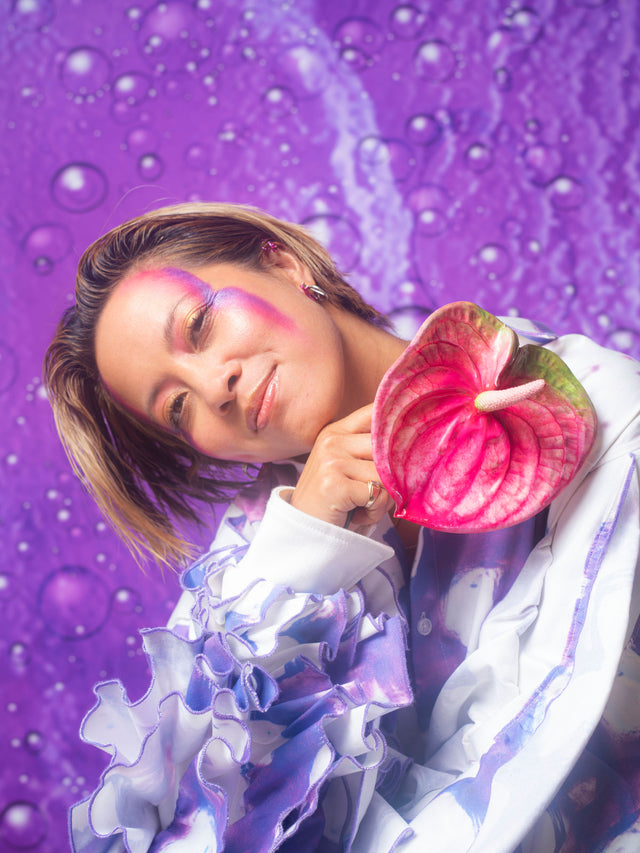
Cooking Hacks with Chef Angela Dimayuga
The chef shares a few tips and tricks she's picked up from recent fun forays into the world of preserving and fermenting (hint: no scraps left behind!!) meant to be enjoyed with your fellow "kitchen playmates."
by Angela Dimayuga | @angela.dimayuga
As a cookbook author and freelance chef, I find myself getting into all kinds of concept cooking. It's fun to play, and pair with an artist, gallery or museum, and make a theme for cooking I haven't done in the past.
Currently I'm at an artist residency working on ceramics and cooking at Unclebrother by gallerist Gavin Brown and artist Rikrit Tiranavija, near the woods and Delaware River in Hancock, New York. I've put together a "Asian-American bistro concept" cooking casual fare under the name Les Monde des Ange or Angel's World, with a fun group of all queer individuals. Before that, I set up an Asian 7-11 themed stall in the lobby of The New Museum of Contemporary Art for their art, design, and tech incubator, NEW INC's 3-day Demo Day festival.
This is all to say that I'm producing lots of different food items and tinkering with new and different ideas all the time. I always have an archive going where I'm using every bit of product purchased by way of preserving, fermenting, and expanding its abilities of original use. Here are some tips that I've grown to love and are essential aspects of a growing pantry and collective of tasty and or useful products aligned with food as craft and fun—including some recent ideas in my repertoire and some loose written "recipes" you can pass around via word of mouth to your other kitchen playmates.
September Cooking Hacks
Lacto-fermented hot sauce, jams and preserves, and supporting small farms.
Lean into supporting local, small, organic and family run farms. I do this by keeping abreast at what's available at the market, and developing relationships with purveyors to learn about what's new or what "seconds" are available. These are items that are imperfect, slightly bruised, but totally delicious. I'll turn them into chili pepper lactoferments as hot sauce, or jams to take me well into the next season. They for the most part last forever or until they are gobbled up from my fridge.
One of my favorite jams this summer was a white nectarine jam from Nicholas Family Farms, and an incredible sour green ume apricot I processed in the form of: umeboshi, umeshu liqueur, and sour ume jam. This hobby project grew to make small batch jams for fun for one of my favorite New York artisans, Tyler Lee Steinbrenner at microbakery, Anti-Conquest Bread in Cobble Hill, Brooklyn. We sell the preserves by the jar next to his local cheese case.
Preserved Lemon Citrus Kitchen Cleaner
Any time I'm using citrus to season, or large quantities to balance and add natural pectin to jam, I save all my lemon rinds. If I have extra lemon wedges from garnishes, I make preserved lemon. I toss them all evenly and in all the crevices with a hefty amount of kosher salt. We want the salt in a even thick layer around each piece. I use some force and press these into food safe plastic containers, jars, or ceramic, and a double layer of plastic wrap against the fruit, and add a weight to reduce air contact and finally a lid. I left that sit on my counter for about a month, or until the juices have leached out in the container, coated each piece of citrus, then transfer to the fridge, once its lost some of its opaqueness.
I also like submerging lemon or orange rinds in a container topped off with white vinegar to make a nice kitchen cleaner. I also toss in some dried lavender, and after about 3 weeks transfer to a spray bottle diluted with 50% water to spritz around my kitchen, mirrors, and glass surfaces.
Cultured Cream
If I find myself with some leftover cream from dessert making, I make cultured cream. I add a few 1/4 cup of plain kefir to the cream, and let it sit at room temperature for about 1 day until it's turned thick. I move this to my fridge and use once chilled. This is a great option for a creme fraiche in your next dish that calls for a creamy, rich topping, with this one also having a nice clean added tang.
Rice Water
All the good Asians and cooks need to be washing their rice, a lot - until the water is clear! I utilize this rice water for special purposes, to add body to a stew or soup I have going for dinner, and always for watering my plants with some extra nutrients. A little research says why the plants are so happy, "rice water for plants contains three most important and necessary complete fertilizer nutrients - nitrogen, phosphorus and potassium. Rice water also contains important nutrients for healthy growth, such as magnesium, calcium, iron and sulfur."
Wine Vinegars
I love to take a wine mother from any natural apple ciders I buy and slip them out of their containers to use for under counter vinegar making. Take the slippery mother and add to a jar with some leftover red wine. I keep two jars going, one for whites and one for reds. Add some clean cheesecloth and a rubber band to aerate and keep bugs out. I always have them passively aging, and my favorite red wine vinegar ever went for almost a year. When I got around to tasting it, what transpired was a multi-dimensional, unctuous, slightly syrupy vinegar I used for special occasions like topping freshly shucked oysters for a loved one.




